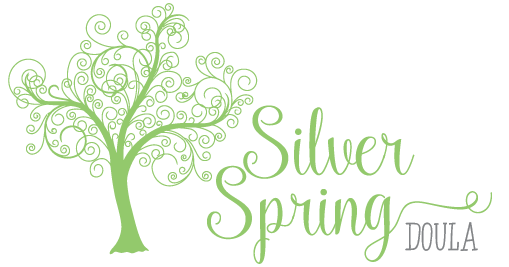How much do YOU know about placenta encapsulation and placentophagy?
The idea of eating raw placenta is off-putting to most people. But when you encapsulate your placenta it is thoroughly dehydrated, then pulverized into a fine powder that is then placed into capsules. You take it like you would a vitamin! You never even have to see the raw placenta if that type of thing is not your cup of tea.
A professional placenta encapsulation specialist (that’s me!) is trained not only in placenta preparation, but also in OSHA bloodborne pathogens standards and food safety. We follow strict safety protocols set out for us by our certifying organization. We take universal precautions to prevent the spread of disease, and sanitize equipment and workspaces thoroughly. Your health and safety are ALWAYS the number one priority!
Good news! Your placenta is the product of LIFE, not death. Nothing had to die to create it – in fact it is deeply and irrevocably associated with birth and regeneration. The placenta has been called “the only vegan meat”! Bonus, consuming your placenta is good for the environment – most placentas born in a hospital are incinerated or disposed of with millions of tons of other medical waste.
While this sounds like a good theory, it has actually been dismissed by a number of researchers. Why? Well, according to one prominent researcher, the “cleaning up the nest to hide the birth from predators” theory only describes a small subset of mammals – and consuming the placenta after birth is an almost universal mammalian phenomenon. It must be conveying benefits! It is actually easier to take a newborn pup away from a mama rat than it is to wrest the placenta out of her paws! So that “good theory” doesn’t actually stand up to much scrutiny.
The placenta is a facilitator organ – it facilitates the exchange of gases and nutrients from your blood stream to the baby’s. While the placenta prevents some toxins and other gunk from getting to baby, it is not stored in the placenta. Any junk (toxins, fetal waste) that doesn’t belong in the baby – or in YOU for that matter – gets sent along back into your system to be processed and disposed of via your kidneys and liver. So, no, it is not full of toxins. It is full of an incredible array of nutrients and hormones that are just SITTING there, waiting for you use to have a healthier, happier postpartum period.
We’ve already established that a professional encapsulator follows strict safety protocols and sanitizes like life depends on it (which, you know, it could). This safety standards hold up WHEREVER you choose to have your placenta encapsulated. Most providers encapsulate in a workspace dedicated to placenta work or in the client’s own kitchen. Your placenta is then rinsed thoroughly and the cord is removed. If you’ve chosen the raw method, after the rinse the membranes are removed, the placenta is sliced and placed in the dehydrator, and left drying for 18-24 hours. If you chose to have your placenta steamed according to traditional Chinese medicine, that happens after the rinse. The next day, your specialist will grind the dried placenta into a very fine powder, put it into capsules, and present them to you, the proud mama, for improved postpartum health, milk supply, energy, and more. Enjoy!
Or pitocin? Or a c-section? Absolutely! Both epidural anesthesia and pitocin break down and leave the system very quickly and will have no noticeable effect on your capsules. Just make sure that the people helping you bring your baby earthside know you want to keep your placenta – especially if you are having a c-section!
Super easy! Just double zip-lock bag your placenta and put it on ice! Make it even easier by bringing a small cooler with you to your birth location.
The short answer is “yup!” The slightly longer answer is Group B strep (GBS) is one of the many types of bacteria that live in the digestive and reproductive tract of humans. It is generally harmless to the carrier (you). While there is a small chance that it can cause an infection in your baby at birth, it lives peacefully in your system already. Consuming any GBS bacteria that might survive the high temperatures of the dehydration process is not harmful in any way.
There are hormones in the placenta that can help stimulate your milk supply. Many women who have had low supply issues in the past find that placenta pills prevent the problem with subsequent births.
At this point, a lot of the evidence for eating your placenta is anecdotal. But that doesn’t mean people aren’t looking into it! As we speak, there are human studies going on at UNLV. Check out the articles below for a look inside the ongoing debate.
Science and Sensibility: Placentophagy: Pop-Culture Phenomenon or an Evidence Based Practice
Why should I eat my placenta?
A lot of women are researching “should I eat my placenta postpartum?” mostly because it seems like the new thing to do. But it is more than a fad. This video will give you a crash course into the existing research into taking placenta pills after your baby is born. Answers to all your burning questions -“What’s in my placenta? ” “Why should I eat my placenta postpartum?” “How can placenta pills help my after my baby is born?” – they’re all here!

In recognition of the profound disparities
in birth outcomes between white and BIPOC birthing people, and in an effort to prioritize racial equity in birth, Silver Spring Doula donates a portion of each of their birth client fees to DC/MD/VA local Black birth organizations such as Mamatoto Village and B.I.R.T.H Equity Maryland.

All are welcome here.
Silver Spring Doula and My Gentle Birth, LLC are woman-owned and proud to serve the LGBTQIA+ community.
These statements have not been evaluated by the Food and Drug Administration. This service is not intended to diagnose, treat, cure, or prevent any disease. Families who choose to utilize these services take full responsibility for their own health and for researching and utilizing placenta remedies.
